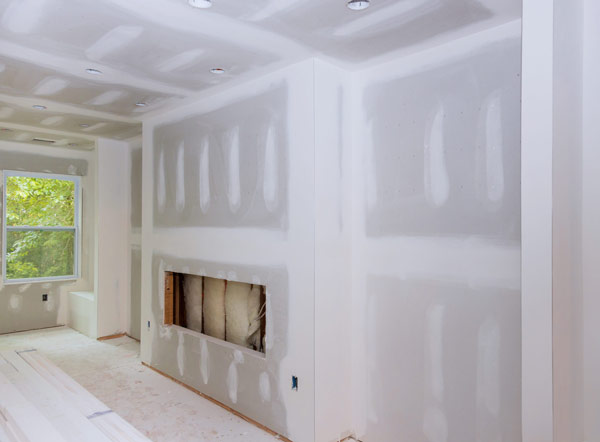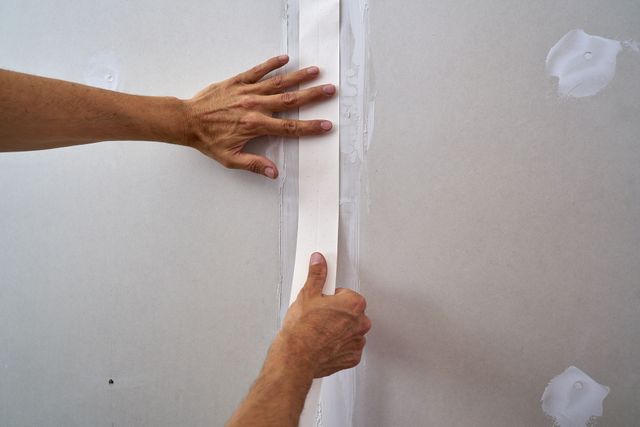Experience the difference of seamless Drywall Repair Ogden UT with expert painting applications.
Wiki Article
Crucial Tips for Effective Drywall Fixing and Setup Methods
Reliable drywall repair and setup requires a mindful method. Recognizing the kinds of drywall and having the right tools is crucial. Appropriate strategies and precise measurements can significantly affect the outcome. Several overlook important steps like taping and fining sand, which can make or break the final appearance. As projects proceed, usual obstacles may develop that require focus. Checking out these suggestions can result in an extra sleek and successful finish.Understanding Various Kinds Of Drywall
Understanding the various sorts of drywall is crucial for any kind of effective repair service or setup project. Drywall, frequently understood as plaster board, is available in several varieties customized for specific applications. Standard drywall is one of the most widely utilized type, suitable for basic indoor wall surfaces and ceilings. Moisture-resistant drywall, frequently environment-friendly in color, is designed for locations susceptible to humidity, such as cooking areas and bathrooms. Fire-resistant drywall, normally colored pink or purple, is crafted to withstand higher temperatures and is often utilized in garages or near heating systems. In addition, soundproof drywall helps minimize noise transmission, making it appropriate for multi-family homes or taping studios. Specialized drywall, like cement board, is utilized in damp areas like showers or tub borders. Understanding these types aids in selecting the right product for each job, ensuring durability and performance in fixings or brand-new installations.Essential Tools for Drywall Fixing and Installation
Having the right tools is important for effective drywall repair and installation. A top quality energy knife is essential for cutting drywall sheets specifically. A drywall T-square helps assure straight edges, while a taping knife is essential for applying joint substance efficiently over seams. Additionally, a drywall saw enables eliminating harmed areas or fitting drywall around components.For hanging drywall, a power drill with drywall screws is indispensable, as it enables protected and quick installation. A degree is additionally important to verify that the drywall is straight and correctly lined up. Once it has actually dried out, a sanding block or post sander is essential for smoothing out joint compound. Lastly, a determining tape is crucial for exact dimensions, stopping waste and guaranteeing an appropriate fit. Furnished with these tools, people can deal with drywall tasks effectively, causing professional-looking outcomes.
Step-by-Step Overview to Repairing Holes and Cracks
When addressing openings and splits in drywall, having the right tools and materials is crucial for an effective repair. This guide describes the essential products and gives a clear, step-by-step process to successfully bring back the surface area. Understanding these aspects will certainly help assure a seamless surface and resilient outcomes.Devices and Materials Needed
A well-equipped toolkit is essential for reliable drywall fixing and setup. Trick devices consist of an utility blade for reducing drywall, a measuring tape to assure accurate sizing, and a drywall saw for bigger holes. A putty blade is vital for applying joint compound efficiently, while a fining sand block or post sander assists achieve a seamless finish. For patching, a roll of fiberglass mesh tape or paper tape is necessary to strengthen joints. Additionally, a drill and screws are needed for safeguarding brand-new drywall items. Important materials include joint compound, guide, and paint to finish the fixing. Having these tools and products accessible guarantees a smoother, extra efficient repair work process, yielding professional-looking results.Repair Service Refine Steps
Fixing openings and splits in drywall calls for a methodical technique to guarantee a smooth finish. The area surrounding the damage ought to be cleaned thoroughly to remove dust and debris. Next off, for small cracks, a putty blade is used to apply a joint compound uniformly over the area. For bigger openings, a patch is required; the damaged area is eliminated, and a brand-new piece of drywall is fitted in area, secured with screws. As soon as that site the patch is in setting, joint substance is put on mix the edges. After drying, fining sand the location smooth is essential. Lastly, the fixed surface area ought to be keyed and painted to match the surrounding wall, ensuring an unnoticeable repair service.Methods for Putting Up Drywall Panels
Mounting drywall panels needs mindful planning and accurate execution to assure a expert and smooth surface. It is crucial to measure the wall area precisely and cut the panels to fit, guaranteeing that they align with the studs. Placing the panels horizontally is commonly suggested, as this can boost the architectural integrity and decrease the number of seams.Using drywall screws, installers need to protect the panels every 16 inches along the studs, ensuring a company hold. It is essential to prevent overdriving the screws, which can damage the paper surface. For edges and edges, using an utility knife enables clean cuts and a tight fit.

Ending Up Touches: Insulation, Mudding, and Fining sand
Once the drywall panels are safely in place, the next vital step involves the complements of taping, mudding, and sanding. Taping is essential for producing a seamless shift in between panels and concealing joints. A quality drywall tape, either paper or fiberglass harmonize, should be used over the joints, guaranteeing it sticks appropriately to the mud that will be applied next.Mudding, or using joint substance, complies with the taping process. This compound fills up voids and smooths out the surface area. A first layer needs to be used kindly, feathering the sides to mix with the drywall. After the preliminary coat dries, succeeding layers might be required for a remarkable coating.
Fining sand is needed to achieve a smooth surface. A fine-grit sandpaper should be utilized to gently smooth out any kind of blemishes. Care needs to be required to stay clear of over-sanding, which can damage the drywall - Drywall Installation Ogden Utah. Effectively executed, these ending up touches create a specialist appearance prepared for painting
Tips for Keeping Your Drywall After Setup
Maintaining drywall after installment is crucial to protecting its look and architectural honesty. Regular cleansing is essential; dust and dirt can build up, so mild cleaning with a moist towel is recommended. Homeowners need to these details also evaluate for any kind of indicators of dampness or mold, especially in high-humidity locations like restrooms and kitchens. If any kind of damages takes place, it is necessary to resolve it promptly to avoid additional issues.Using furniture pads can assist protect against scrapes or dents from heavy things. Furthermore, painting the drywall with a high-quality, cleanable paint offers an extra layer of defense and makes future cleaning simpler. Stay clear of making use of unpleasant cleansers or tools, as these can harm the surface. Maintaining a stable indoor climate with suitable moisture degrees will aid avoid splitting or deforming over time. By following these suggestions, one can guarantee that drywall remains in exceptional problem for several years ahead.
Regularly Asked Inquiries
Just How Long Does Drywall Take to Completely Dry After Installation?

Can I Install Drywall Over Existing Drywall?
Yes, drywall can be set up over existing drywall, but it is important to assure the underlying surface area is safe and secure and effectively prepared. This approach can improve insulation and lower installation time, though it may add weight.What Is the most effective Means to Soundproof Drywall?
The ideal method to soundproof drywall involves utilizing specialized soundproofing materials, such as durable channels, acoustic caulk, and sound-dampening drywall. These techniques properly decrease audio transmission between rooms, enhancing general acoustic efficiency in living spaces.How Do I Select the Right Drywall Density?
To pick the right drywall density, think about the application and area. Standard property walls usually use 1/2 inch, while ceilings or specialized areas may need 5/8 inch for extra toughness and soundproofing capacities.Exist Eco-Friendly Drywall Options Available?
Yes, environment-friendly drywall options are available. These consist of items made from recycled products, gypsum boards with reduced unpredictable natural compounds (VOCs), and those using lasting manufacturing procedures, offering environmentally-conscious options for building and renovation jobs.Having the right tools is essential for efficient drywall repair service and setup. For hanging drywall, a power drill with drywall screws is crucial, as it enables fast and secure installation. Secret devices include an utility knife for cutting drywall, a tape step to ensure precise sizing, and a drywall saw for larger openings. Yes, drywall can be installed over existing drywall, however it is necessary to guarantee the underlying surface is secure and adequately prepared. The best method to soundproof drywall includes utilizing specialized soundproofing materials, such as resistant channels, acoustic caulk, and sound-dampening drywall.
Report this wiki page